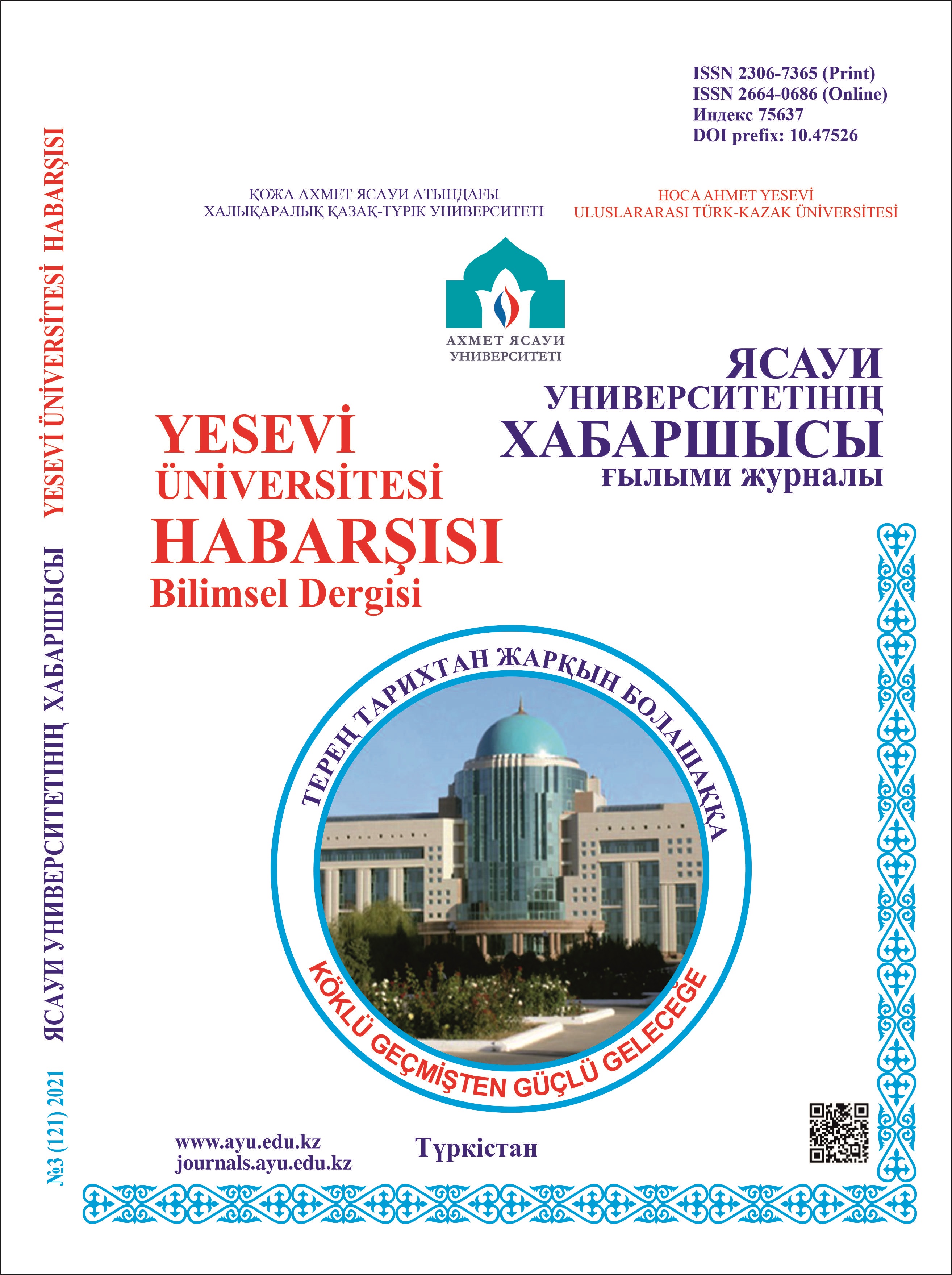Education and Artificial Intelligence
76 23
Keywords:
artificial intelligence, neural networks, chatbot ChatGPT, education, threats, artificial intelligence in education, risks of using.Abstract
This article provides a detailed examination of both the benefits and potential risks of implementing artificial intelligence technologies in higher education institutions. It also discusses the possibilities of using neural networks in the educational process, their impact on the quality of education, the availability of educational resources, and the individualization of students' educational trajectories. Particular attention is paid to the role of artificial intelligence in automating routine tasks, assessing knowledge, and creating adaptive curricula. The article also considers the ethical and legal issues associated with the use of artificial intelligence in the educational environment. It emphasizes the need to develop clear rules and standards that will ensure the fair and safe use of neural network technologies. In addition, aspects of academic honesty and possible risks of unfair use of artificial intelligence in educational and scientific activities are analyzed. An important part of the study is the results of a sociological survey “Students and Artificial Intelligence: A Look into the Future” conducted among students of Makhambet Utemisov West Kazakhstan University. The survey data show that generative artificial intelligence is widely used by students to solve educational problems, write scientific papers, and implement creative projects. Based on the data obtained, a conclusion was made about the need to continue scientific discussion of the issues of integrating artificial intelligence into the educational sphere, as well as developing methodological recommendations for its effective use in the educational process. Particular attention is paid to teaching students and teachers the principles of responsible interaction with artificial intelligence, developing critical thinking and analyzing information obtained with its help.
References
ПАЙДАЛАНЫЛҒАН ӘДЕБИЕТТЕР ТІЗІМІ
Hamilton A., Wiliam D., Hattie J. The future of AI in education: 13 things we can do to minimize the damage. – Research Gate, 2023. https://doi.org/10.35542/osf.io/372vr [Electronic resource]. URL: https://www.researchgate.net/publication/373108877_The_Future_of_AI_in_ (date of access 15.01.2025)
Chowdhery A., Narang S., Devlin J., Bosma M., Mishra G., Roberts A., et al. PaLM: Scaling language modeling with pathways // Journal of Machine Learning Research. – 2023. – №24. – P. 103–113.
Frieder S., Pinchetti L., Griffiths R.-R., Salvatori T., Lukasiewicz T., Petersen P.C., Chevalier A., Berner J. Math ematical capabilities of ChatGPT // Advances in neural information processing systems. – 2023. – Т. 36. – С. 27699-27744.
Gao L., Madaan A., Zhou S., Alon U., Liu P., Yang Y., Callan J., Neubig G. PAL: Program-aided language models // In: Proceedings of the 40th international conference on machine learning. – 2023. – Vol. 202. – P. 10764–10799.
Gilson A., Safranek C., Huang T., Socrates V., Chi L., Taylor R., Chartash D. How does ChatGPT perform on the United States medical licensing exams? The implications of large language models for medical education and knowledge assessment // JMIR Medical Education. – 2023. – №9. – e45312. https://doi.org/10.2196/45312
Акимов А.Е. Большие данные, искусственный интеллект и облачные технологии: цифровизация железных дорог // Инновации и инвестиции. – 2023. – №3. – С. 150–153. [Электронды ресурс]. URL: https://cyberleninka.ru/article/n/bolshie-dannye-iskusstvennyy-intellekt-i-oblachnye-tehnologii-tsifrovizatsiya-zheleznyh-dorog (дата обращения 10.04.2024) 7. Долженко И.Б. CHATGPT и потенциал применения генеративного искусственного интеллекта в маркетинге // Вектор экономики. – 2023. – №4. [Электронный ресурс]. URL: http://www.vectoreconomy.ru/images/publications/2023/4/marketingandmanagement/Dolzhenko2.pdf. (дата обращения 15.01.2025) 8. Городнова Н.В. Применение искусственного интеллекта в экономической дипломатии и международной торговле // Вопросы инновационной экономики. – 2021. – №11(2). – С. 565–580. https://doi.org/10.18334/vinec.11.2.112214. 9. Фершт В.М., Латкин А.П., Иванова В.Н. Современные подходы к использованию искусственного интеллекта в медицине // Территория новых возможностей. Вестник ВГУЭС. – 2020. – №12(1). – С. 121–130. dx.doi.org/10.24866/VVSU/2073-3984/2020-1/121-130. 10. Лукичёв П.М., Чекмарев О.П. Риски применения искусственного интеллекта в системе высшего образования // Вопросы инновационной экономики. – 2024. – №14(2). – С. 463–482. https://doi.org/10.18334/vinec.14.2.120731.
REFERENCES
Hamilton A., Wiliam D., Hattie J. The future of AI in education: 13 things we can do to minimize the damage. – Research Gate, 2023. https://doi.org/10.35542/osf.io/372vr [Electronic resource]. URL: https://www.researchgate.net/publication/373108877_The_Future_of_AI_in_ (date of access 15.01.2025)
Chowdhery A., Narang S., Devlin J., Bosma M., Mishra G., Roberts A., et al. PaLM: Scaling language modeling with pathways // Journal of Machine Learning Research. – 2023. – №24. – P. 103–113.
Frieder S., Pinchetti L., Griffiths R.-R., Salvatori T., Lukasiewicz T., Petersen P.C., Chevalier A., Berner J. Math ematical capabilities of ChatGPT // Advances in neural information processing systems. – 2023. – T. 36. – S. 27699-27744.
Gao L., Madaan A., Zhou S., Alon U., Liu P., Yang Y., Callan J., Neubig G. PAL: Program-aided language models // In: Proceedings of the 40th international conference on machine learning. – 2023. – Vol. 202. – P. 10764–10799.
Gilson A., Safranek C., Huang T., Socrates V., Chi L., Taylor R., Chartash D. How does ChatGPT perform on the United States medical licensing exams? The implications of large language models for medical education and knowledge assessment // JMIR Medical Education. – 2023. – №9. – e45312. https://doi.org/10.2196/45312
Akimov A.E. Bolshie dannye, iskusstvennyi intellekt i oblachnye tehnologii: cifrovizacia zheleznyh dorog [Big data, artificial intelligence and cloud technologies: digitalization of railways] // Innovacii i investicii. – 2023. – №3. – S. 150–153. [Electronic resource]. URL: https://cyberleninka.ru/article/n/bolshie-dannye-iskusstvennyy-intellekt-i-oblachnye-tehnologii-tsifrovizatsiya-zheleznyh-dorog (date of access 10.04.2024) [in Russian]
Dolzhenko I.B. CHATGPT i potencial primenenia generativnogo iskusstvennogo intellekta v marketinge [CHATGPT and the potential of generative artificial intelligence in marketing] // Vektor ekonomiki. – 2023. – №4. [Electronic resource]. URL: http://www.vectoreconomy.ru/images/publications/2023/4/marketingandmanagement/Dolzhenko2.pdf. (date of access 15.01.2025) [in Russian]
Gorodnova N.V. Primenenie iskusstvennogo intellekta v ekonomicheskoi diplomatii i mezhdunarodnoi torgovle [The use of artificial intelligence in economic diplomacy and international trade] // Voprosy innovacionnoi ekonomiki. – 2021. – №11(2). – S. 565–580. https://doi.org/10.18334/vinec.11.2.112214. [in Russian]
Fersht V.M., Latkin A.P., Ivanova V.N. Sovremennye podhody k ispolzovaniu iskusstvennogo intellekta v medicine [Modern approaches to the use of artificial intelligence in medicine] // Territoria novyh vozmozhnostei. Vestnik VGUES. – 2020. – №12(1). – S. 121–130. dx.doi.org/10.24866/VVSU/2073-3984/2020-1/121-130. [in Russian]
Lukichiov P.M., Chekmarev O.P. Riski primenenia iskusstvennogo intellekta v sisteme vysshego obrazovania [The risks of using artificial intelligence in the higher education system] // Voprosy innovacionnoi ekonomiki. – 2024. – №14(2). – S. 463–482. https://doi.org/10.18334/vinec.14.2.120731. [in Russian]

